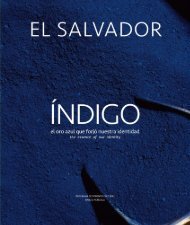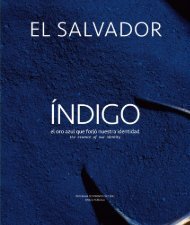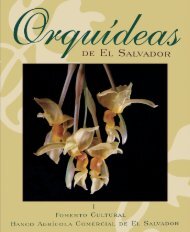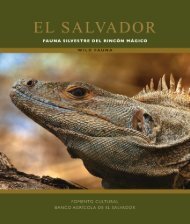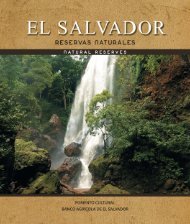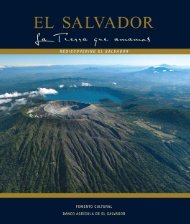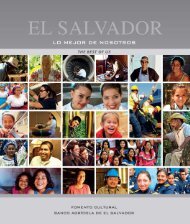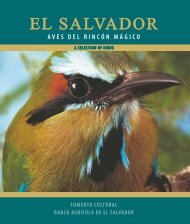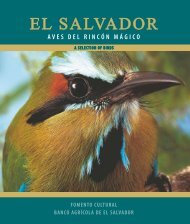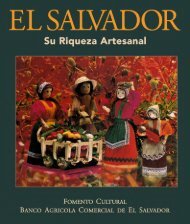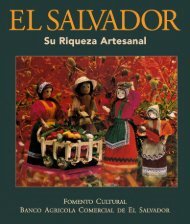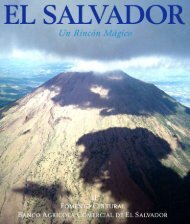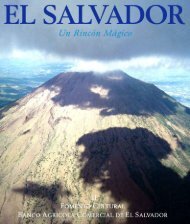You also want an ePaper? Increase the reach of your titles
YUMPU automatically turns print PDFs into web optimized ePapers that Google loves.
Memory of the soil<br />
Since the formation of the continental masses, this territory has<br />
always been very rich in biodiversity, which allowed multiple<br />
microclimates to develop, promoting a wide variety of plant<br />
and animal species. El Salvador is one of the richest spaces in<br />
biological and paleontological material of the continent.<br />
The current Central America is the result of the clash of three<br />
tectonic plates: Caribbean, Cocos and Nazca, originated 23<br />
million years ago. The displacement of the Chortis and Maya<br />
blocks, the intense volcanic activity (from 19 to 10 Ma.) And the<br />
fast convergence of the Cocos plate that produced the rupture<br />
of the Cocos slab, generated the uprising in the North of Central<br />
America, which affected the north of El Salvador forming the<br />
mountainous relief, a topography that configured cloud forest,<br />
rainforest, floodplain and coastal flatland.<br />
The geological force of the volcanoes has drawn a mountainous<br />
topography that surrounds fertile valleys such as Zapotitán and<br />
Jiboa, nourished by the alluvial transits between the volcanic<br />
chain. The result of archeological studies remark that the<br />
small territory of El Salvador covers more volcanic features per<br />
square kilometer than any other country on the mainland in the<br />
hemisphere, and the identity of our soil also depends on this<br />
intense volcanic activity.<br />
The condition of the isthmus of Central America, considered for<br />
a long time only with geopolitical potential, is also strategically<br />
biodiverse. In El Salvador, for example, the diverse concentrated<br />
microclimates enable uni<strong>que</strong> ecosystems of humid and salty<br />
forests, among mountains, valleys, cliffs, and coasts. That<br />
explains why, in the same geographical area, vegetations of<br />
different climates vary; like cacti and orchids are differentiated<br />
in their habitat by the soil and its height. El Salvador is located<br />
in a neotropical zone, characterized by a high floral biomass and<br />
diversity of fauna that extends from the Isthmus of Tehuantepec<br />
to the lowlands of South America.<br />
The prehistoric formation of the soil, allows us to know the<br />
biodiversity on each stage. The stratigraphies throughout the<br />
country narrate the historical stages of the soil and the sediments<br />
of tephra, volcanic material composed of pumice, ash, rocks and<br />
volcanic sand, reveal the ages of the organisms that inhabited it.<br />
Farallones costa del Pacífico.<br />
<strong>La</strong> Libertad.<br />
33



